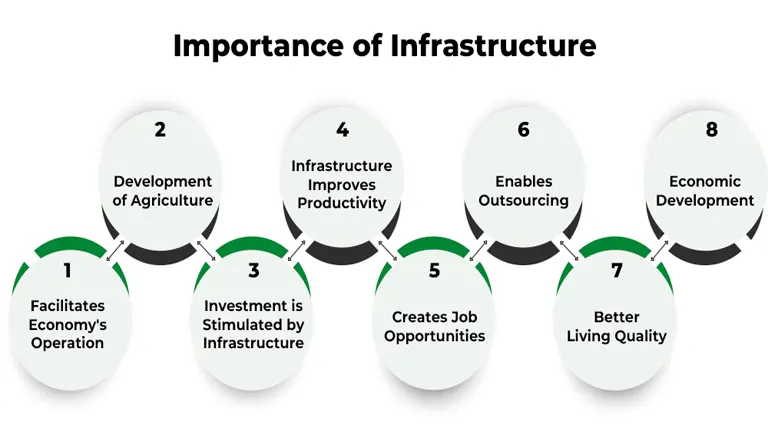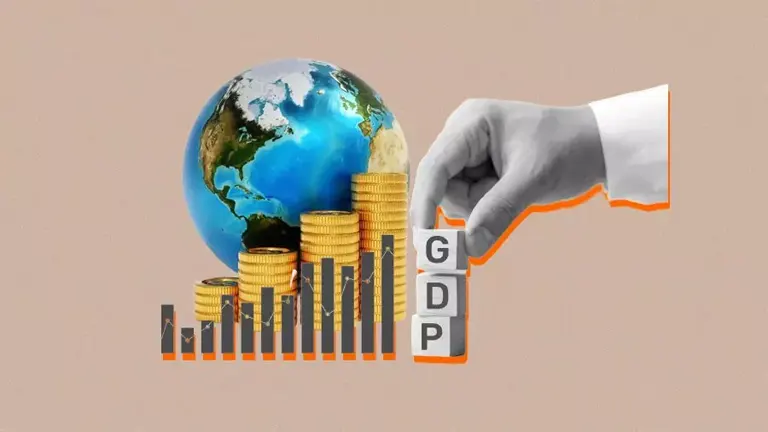Economic Contributions Across Local, National, and Global Levels
- August 16, 2024
- 0 comment
In today’s rapidly evolving world, the economic contributions interconnectedness of local, national, and global economies is vital to economic development, innovation, and sustainability. To fully understand the impact of economic policies and trends, it’s essential to explore how these levels interact with each other.

Each level of the economy, from small community businesses to global corporations, contributes uniquely to the larger economic framework.
Understanding Economic Contributions
Economic contributions refer to the various ways in which different sectors, industries, and activities add value to an economy. These contributions can be measured through several key indicators such as GDP (Gross Domestic Product), employment rates, and productivity levels. At each level, these contributions manifest differently, reflecting the unique characteristics and needs of local, national, and global economies.
At the local level, contributions often focus on community-driven growth and sustainability. Small businesses, local initiatives, and regional industries play pivotal roles in supporting employment and fostering innovation. National contributions, on the other hand, involve larger-scale industrial activities, government policies, and infrastructure development, driving broader economic stability and growth. Globally, the interplay of international trade, investment, and multinational corporations creates a complex web of economic interactions that shape the global market landscape.
Local Economic Contributions
Local economic contributions form the backbone of any thriving economy, serving as the primary driver of economic activity within communities. By generating employment opportunities, they play a critical role in reducing unemployment and fostering economic stability.

Local businesses and enterprises are essential in providing goods and services that meet the unique needs of their communities. They also stimulate community development by investing in local infrastructure and supporting social initiatives. Moreover, these businesses are hotbeds of innovation and entrepreneurship, continually introducing new ideas and sustainable practices that contribute to long-term economic growth.
Role of SMEs in Local Economies
Small and Medium Enterprises (SMEs) are frequently regarded as the backbone of local economies due to their significant impact on job creation and economic stability. In many regions, SMEs account for a substantial portion of employment, offering diverse job opportunities that help reduce unemployment rates and support community livelihoods. These enterprises are pivotal in driving innovation by developing new products and services, which enhance competitiveness and spur economic growth. Furthermore, SMEs are integral to local supply chains, connecting with larger firms to ensure the smooth flow of goods and services. This integration not only strengthens economic resilience but also fosters a dynamic business environment that encourages continuous improvement and adaptation.
Impact of Local Businesses on Community Development
Local businesses play a vital role in community development through various impactful contributions. By keeping money circulating within the community, they boost economic activity and support local projects and initiatives, which enhances the community’s overall prosperity.

This continuous flow of economic resources fosters social cohesion and strengthens the sense of community identity, as residents feel more connected and invested in their local environment. In addition, many local businesses actively engage in sustainability initiatives, adopting environmentally friendly practices that benefit both the community and the planet. These efforts contribute to the long-term well-being of their communities by promoting sustainable growth and ensuring a healthier environment for future generations.
Challenges Faced by Local Economies
Despite their critical role in economic development, local economies face numerous challenges that can hinder their growth and sustainability. Economic disparities between regions often result in unequal access to resources and opportunities, leaving some communities struggling to keep up with more prosperous areas. This inequality can exacerbate social and economic divides, making it difficult for local economies to thrive. Additionally, local businesses face intense competition from larger firms and online marketplaces, which often have greater resources and reach. This competition can pressure smaller businesses, forcing them to adapt quickly or risk closure. Furthermore, access to financing and investment is frequently limited for local enterprises, creating significant barriers to growth and innovation. Without adequate funding, many local businesses struggle to expand their operations or invest in new technologies, hampering their ability to compete and succeed in an increasingly globalized market.
National Economic Contributions
At the national level, economic contributions encompass a broad spectrum of activities and policies that influence the entire country’s economic landscape. These contributions are vital for ensuring long-term economic stability and growth, affecting everything from employment rates to GDP. Government interventions play a crucial role, as they include fiscal policies like taxation and spending, which help regulate economic activity and address issues such as inflation and unemployment.

Infrastructure development is another significant component, as investments in transportation, energy, and communication networks enhance productivity and connectivity across the nation. Additionally, the growth of key national industries, such as manufacturing, technology, and agriculture, drives economic expansion by increasing exports and improving national competitiveness. Together, these elements form the foundation of a robust national economy, supporting both domestic prosperity and international trade relations.
Government Policies and Economic Growth
Government policies play a pivotal role in shaping national economic growth. Fiscal policies, including taxation and government spending, can stimulate economic activity and promote stability. Monetary policies, such as interest rate adjustments and money supply management, also influence economic performance by affecting inflation and employment levels.
Infrastructure Development and Economic Impact
Infrastructure development is a critical component of national economic contributions, playing a key role in facilitating growth and prosperity. Investments in transportation infrastructure, such as roads, railways, and airports, improve the movement of goods and people, thereby boosting productivity and efficiency. Similarly, energy infrastructure, including power plants and renewable energy projects, ensures a reliable supply of energy, which is essential for businesses and industries to operate effectively.

Communication infrastructure, such as broadband networks and telecommunications systems, enhances connectivity and enables seamless communication, driving innovation and digital transformation. Well-developed infrastructure not only supports domestic economic activities but also attracts foreign investment by providing a stable and efficient environment for businesses. As a result, countries with robust infrastructure systems are more competitive on a global scale, able to capitalize on trade opportunities and foster long-term economic growth.
National Industries and Their Contributions
Certain industries, such as manufacturing, technology, and agriculture, serve as key drivers of national economic contributions by shaping the economic landscape and fostering growth. Manufacturing industries are vital because they produce goods for both domestic consumption and export, which significantly contributes to a country’s GDP. This sector not only provides a wide range of employment opportunities but also supports the development of related industries, such as logistics and retail. The technology sector is another powerhouse, driving innovation and creating high-value jobs that propel economic advancement. This industry facilitates advancements in automation, artificial intelligence, and digital services, which enhance productivity across various sectors and increase global competitiveness.
Challenges at the National Level
National economies face a range of challenges that can impede growth and development, requiring strategic approaches to overcome them. One significant concern is income inequality, where disparities in wealth distribution affect social cohesion and economic stability. This inequality can lead to social unrest and limit access to essential services for marginalized communities, ultimately hindering overall economic progress. Unemployment and underemployment are also critical issues, as they constrain economic potential by preventing individuals from fully utilizing their skills and talents. When large segments of the population are unable to find adequate employment, it weakens consumer spending and reduces economic output. Inflation poses another challenge, as it erodes purchasing power and savings, making it difficult for families to afford basic necessities and plan for the future.
Global Economic Contributions
In the global arena, economic contributions are characterized by complex interactions between countries, driven by factors such as globalization, trade agreements, and the activities of multinational corporations. Globalization has interconnected economies, facilitating the flow of goods, services, capital, and labor across borders, which enhances economic growth and development.

Trade agreements, such as free trade agreements and regional economic partnerships, play a pivotal role in reducing tariffs and barriers, allowing countries to access new markets and expand their economic reach.
Impact of Globalization on Economies
Globalization has transformed economies by increasing economic integration and interdependence. It facilitates cultural exchange, technological transfer, and the movement of goods, services, and capital across borders. While globalization has led to economic growth and poverty reduction in many regions, it also presents challenges, such as trade imbalances and cultural homogenization.
Role of Multinational Corporations
Multinational corporations (MNCs) play a significant role in global economic contributions. They invest in various countries, bringing capital, technology, and employment opportunities. MNCs drive innovation and competitiveness by leveraging global supply chains and accessing diverse markets. However, their influence can also lead to concerns about economic dominance and exploitation of resources.
Trade Agreements and Economic Growth
Trade agreements are essential instruments for promoting economic growth and cooperation between countries. Free trade agreements reduce tariffs and barriers, facilitating the exchange of goods and services. Regional trade agreements, such as the European Union and NAFTA, enhance economic integration and create larger markets for businesses. Economic partnerships foster collaboration and shared prosperity among nations.
Challenges of Global Economic Integration
Despite the benefits, global economic integration poses challenges that need to be addressed. Trade imbalances can lead to economic tensions and dependencies, affecting national economies. Economic dependency on global markets can expose countries to external shocks and vulnerabilities. Moreover, environmental impacts, such as carbon emissions and resource depletion, require international cooperation and sustainable practices.
The interconnectedness of Local, National, and Global Economies
The interconnectedness of local, national, and global economies is a defining feature of the modern economic landscape. Supply chains, technological advancements, and economic policies create a web of interactions that shape economic outcomes at all levels. Understanding these connections is essential for addressing economic challenges and harnessing opportunities for growth and development.
The Future of Economic Contributions
The future of economic contributions will be influenced by several trends and developments. The digital economy, driven by technological advancements, is reshaping industries and creating new opportunities for innovation and growth. Sustainable development goals emphasize the need for environmentally and socially responsible economic practices. As economies continue to evolve, collaboration and adaptability will be key to ensuring inclusive and sustainable growth.
Conclusion
Economic contributions across local, national, and global levels are integral to shaping the world’s economic landscape. Each level brings unique strengths and challenges, contributing to the overall dynamics of economic development. By understanding these contributions and their interconnectedness, policymakers, businesses, and individuals can work together to create a more prosperous and sustainable future.
FAQs
- What are economic contributions? Economic contributions refer to the value added by various sectors, industries, and activities to an economy. They include factors such as GDP, employment, productivity, and innovation that contribute to economic growth and development.
- How do local businesses impact community development? Local businesses impact community development by circulating money within the community, creating jobs, and supporting local projects. They foster social cohesion and contribute to sustainability initiatives, enhancing the overall well-being of communities.
- What role do multinational corporations play in global economies? Multinational corporations play a significant role in global economies by investing in different countries, creating jobs, and driving innovation. They leverage global supply chains to access diverse markets and contribute to economic growth and development.
- What challenges do national economies face? National economies face challenges such as income inequality, unemployment, and inflation. They must navigate global economic uncertainties and adapt to technological and environmental changes to ensure sustainable growth and development.
- How does globalization impact economic contributions? Globalization impacts economic contributions by increasing economic integration and interdependence. It facilitates the exchange of goods, services, and capital across borders, driving economic growth and cultural exchange. However, it also presents challenges such as trade imbalances and economic dependencies.
- What are the key trends shaping the future of economic contributions? The key trends shaping the future of economic contributions include the digital economy, sustainable development goals, and technological advancements. These trends are reshaping industries, creating new opportunities, and emphasizing the importance of environmentally and socially responsible economic practices.
- How do small and medium enterprises (SMEs) contribute to local economies? Small and medium enterprises (SMEs) contribute to local economies by providing jobs, fostering innovation, and supporting local supply chains. They are often more agile than larger companies, allowing them to adapt quickly to changing market conditions and consumer needs. SMEs also play a crucial role in driving regional economic development by creating vibrant business ecosystems and contributing to the overall economic resilience of communities.
- What are some challenges local businesses face in today’s economy? Local businesses face challenges such as competition from large corporations and online retailers, limited access to capital and resources, and regulatory hurdles. They may also struggle with attracting and retaining talent due to competitive job markets and wage pressures. Additionally, economic disparities between regions can impact the ability of local businesses to thrive, requiring targeted support and policies to ensure their growth and sustainability.
- How do government policies influence national economic contributions? Government policies influence national economic contributions by setting the framework within which businesses operate. Fiscal policies, such as taxation and public spending, can stimulate economic activity and influence the distribution of resources. Monetary policies, including interest rate adjustments, impact inflation and economic stability. Additionally, regulatory policies shape the business environment, affecting innovation, competition, and consumer protection.
- What are the environmental impacts of global economic integration? Global economic integration can lead to environmental impacts such as increased carbon emissions, resource depletion, and biodiversity loss. The expansion of global trade often results in higher energy consumption and transportation emissions. Additionally, the demand for natural resources can lead to overexploitation and habitat destruction. To mitigate these impacts, international cooperation and the adoption of sustainable practices are essential to balancing economic growth with environmental stewardship.
Economic contributions across local, national, and global levels are integral to shaping the world’s economic landscape. Each level brings unique strengths and challenges, contributing to the overall dynamics of economic development. By understanding these contributions and their interconnectedness, policymakers, businesses, and individuals can work together to create a more prosperous and sustainable future.

James Wilson
Forestry AuthorJames Wilson has over 15 years of experience in forestry economics, specializing in sustainable practices, investment opportunities, and financial management. He has contributed to notable publications like "Forestry Today" and "EcoFinance Journal" and is known for providing practical and insightful advice. With a degree in Environmental Economics, James stays updated through continuous learning and active participation in industry discussions. Outside work, he enjoys hiking and nature photography, bringing a well-rounded perspective to his professional role.













Leave your comment